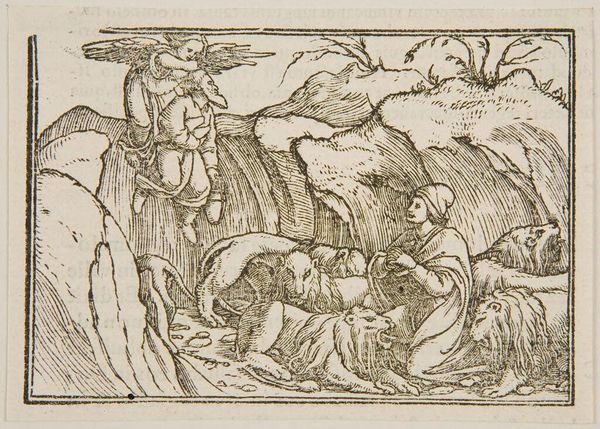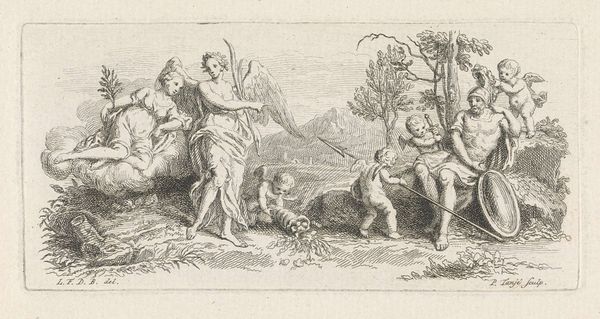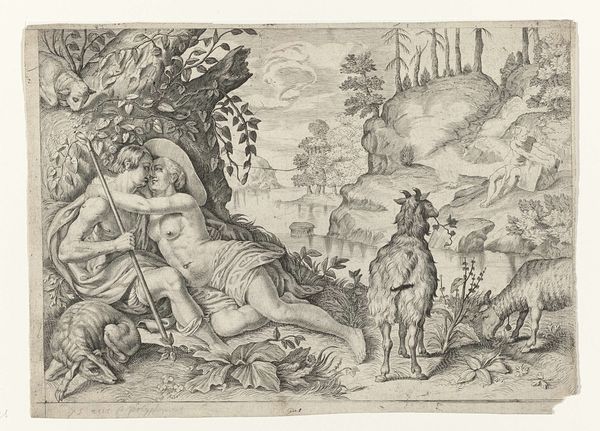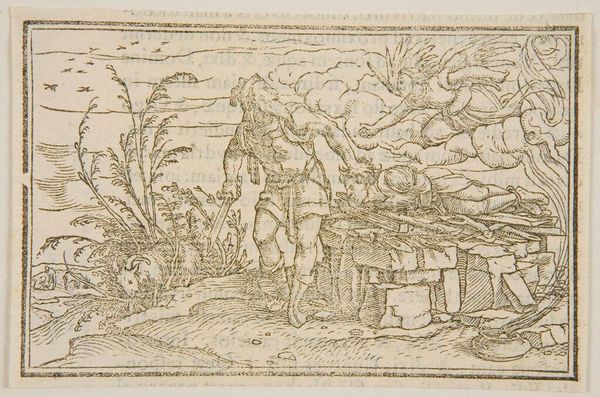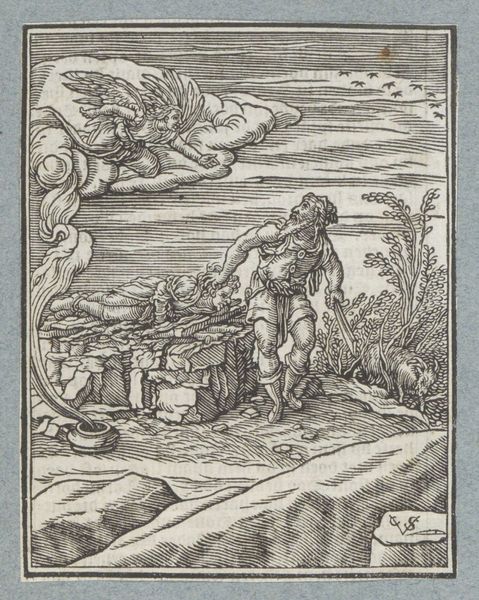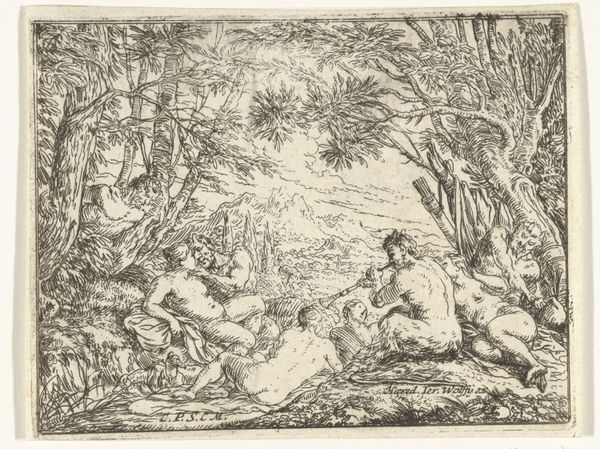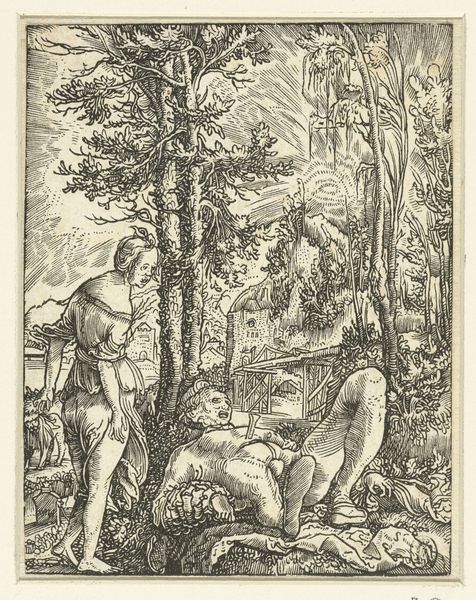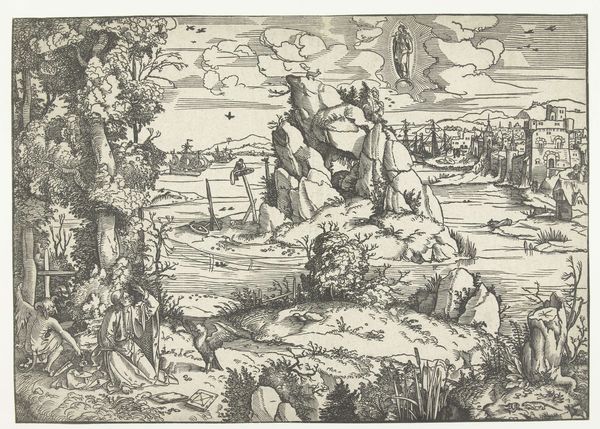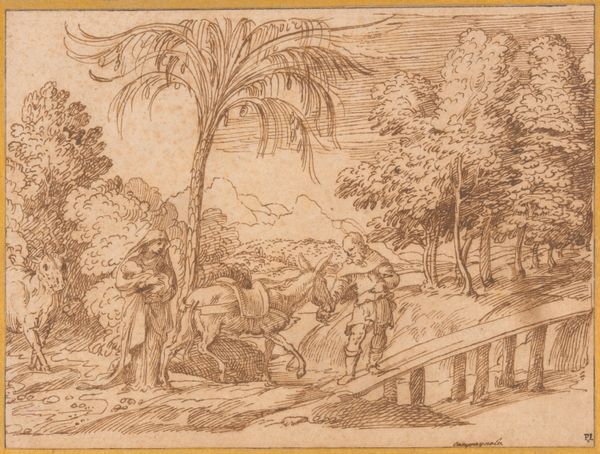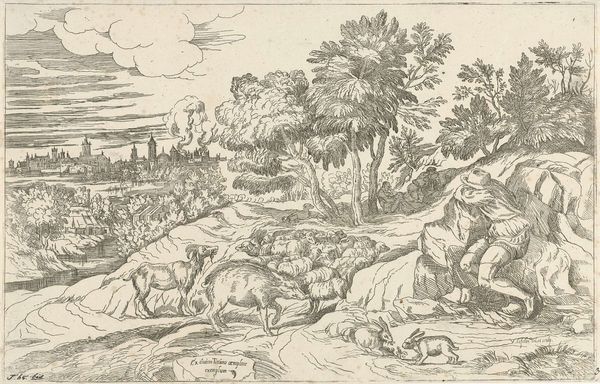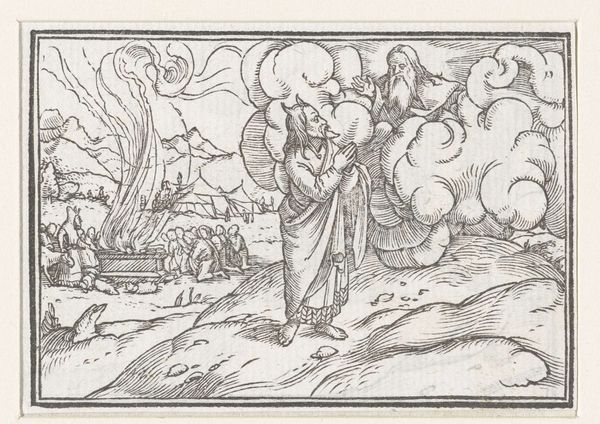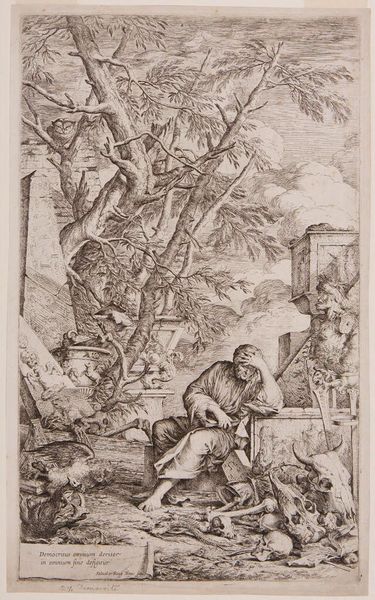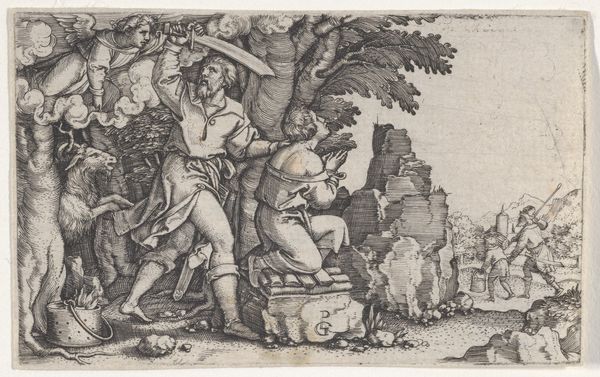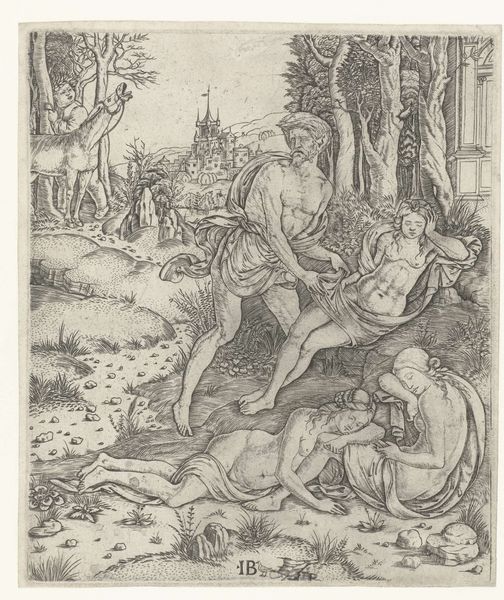
drawing, print, paper, ink, engraving
#
drawing
#
narrative-art
# print
#
pen illustration
#
figuration
#
paper
#
ink
#
history-painting
#
northern-renaissance
#
engraving
Dimensions: height 60 mm, width 85 mm, height 85 mm, width 110 mm
Copyright: Rijks Museum: Open Domain
Curator: Gaze upon this haunting engraving, "Abraham Sacrificing Isaac," crafted by Hans Holbein the Younger in 1538, now resting within the Rijksmuseum's collection. It's a powerful interpretation of a very potent biblical scene. Editor: My gut reaction is a sort of desolate awe. There's a chilling simplicity to the scene, all rendered in stark black and white, like a nightmare caught on paper. You almost hear the silent scream of a moral dilemma frozen in time. Curator: Holbein certainly distills the narrative to its most agonizing point, doesn’t he? Consider the composition – the looming figure of Abraham, contrasted against the limp body of Isaac laid upon the altar. The angel's dramatic arrival from the clouds breaks the plane of the image as it resolves the scene. What visual cues do you find yourself drawn to within the structure? Editor: Well, it is hard not to focus on the weight of Abraham’s hand on Isaac, that tension between paternal love and divine command. It’s fascinating how Holbein uses line to create that emotional crux – Abraham's stern, lined face versus the smooth, almost porcelain skin of Isaac. And that looming sword—such dread implied. But the rigid architecture of the altar really amplifies a sense of impending doom. Is this sense of hopelessness what a Renaissance audience might have encountered in the work, or do you imagine something different? Curator: The Northern Renaissance was consumed by humanism. The composition, which uses Abraham’s looming position to fill the vertical plane, might highlight the significance of personal morality over unquestioned faith. Holbein's choices in line weight further reinforce the core values of this pivotal time in intellectual development. Editor: Looking closely, it seems Holbein wants us to dwell on Abraham’s inner torment just before grace intervenes. Holbein leads us into that sliver of uncertainty, asking us how the divine intersects with our own moral landscapes. Curator: It’s a print brimming with that period’s unease and excitement—an artistic and intellectual awakening playing out across faith, humanism, and artistic expression. Thanks for offering this interpretation with me today, this will stay with me a while. Editor: The pleasure was all mine; it is rare to be so visually ensnared! A final shiver, and I must move on.
Comments
No comments
Be the first to comment and join the conversation on the ultimate creative platform.
